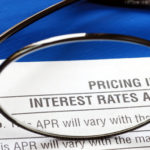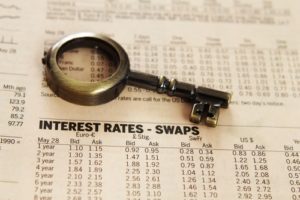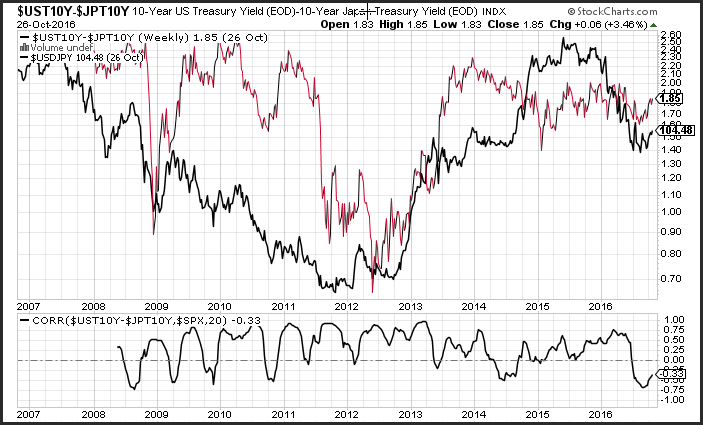 The currency markets are intertwined with the interest rate markets allowing sovereign rates to have a direct influence on the direction of a currency pair. In this lesson, we will discuss in depth how interest rates effect currency markets.
The currency markets are intertwined with the interest rate markets allowing sovereign rates to have a direct influence on the direction of a currency pair. In this lesson, we will discuss in depth how interest rates effect currency markets.
Sovereign rates, which are the official interest rates issued by the government of a country, are used to create the fx forward market. The forward rate, of a currency pair is any date longer than the spot rate. As sovereign interest rates fluctuate relative to other sovereign rates, the change can drive the direction of the forex market.
Most of the transactions that take place in the currency market are referred to as spot transactions. A spot currency transaction is one where the delivery of the physical currency happens in 2-business days. If a transaction is less than spot, it is referred to as tom-next. There are very few currency pairs that are traded on this basis, and it is only used with countries that border one another such as the U.S. and Canada.
If a transaction has as settlement date that is longer than 2-business days, it is known as a forward rate transaction. There are two components of a forward rate transaction, and they include the spot rate and the forward points (spot rate +/- forward points = forward rate). The forward rate is customized to every day beyond spot. If you asked for a settlement date on November 1 as well as November 3, the rate will be different.
The Currency Carry
At its core, interest rates and currency markets are made up of borrowers and lenders. When you transact in the forex market you are purchasing a currency and simultaneously selling another currency. In theory, if you were receiving the physical currency, you would immediately place the funds at a bank and earn interest on your capital.
You are lending the money you received to a bank who will pay you and interest rate on that loan. The interest you would receive would be predicated on how long you have the money in the bank, and the longer you agree to lock it up for, the better the rate will be. Most of currency transactions fluctuate around overnight rates, which is the rate that banks lend to one another.
The currency markets are driven by the difference between sovereign interest rates over the long term. Currencies that boast higher currency interest rates are considered more attractive, but there is no free lunch. If you purchase a higher yielding currency with the intent on holding it and earning the yield differential, you will find that you face spot risk.
The decline in the spot exchange rate due to an advantage in the yield differential is known as covered interest parity. This theoretical concept implies that you are equally well off by either purchasing the currency with the higher rate, or purchasing the currency with the lower rate. For example, if you purchased the USD and sold the EUR and plan on holding the currency for 2-years you would earn 1.5% because of the difference in the yield. Interest rate parity says that over the 2-year period the Euro will increase in value relative to the dollar otherwise arbitrage traders would come in and take advantage of this opportunity, by reducing the forward rate to parity.
The currency carry is a term that describes whether you will earn interest or pay away interest while you are holding a currency pair. The currency with the higher rate will earn what is referred to as the interest rate differential or the carry.
Each country has its own foreign currency interest rate. For example, the German government bond has a specific interest rate based on the value of the bond. As the price of a bond increases, the yield on the bond declines. As bond prices decline, the yield on the bond increases. If you purchase a currency with a relatively higher interest rate relative to the currency you sell, you will earn the difference in the respective interest rates, which is called the carry.
Many traders use a carry strategy to generate income. They look for currency pairs that are relatively stable where they can earn income if the currency pair does not bleed out the advantage of holding the higher yielding currency. Since the currency market provides opportunities to leverage gains, even small interest rate differentials can be magnified.
This information is also important when you are considering shorting a higher yielding currency. If you short an emerging market currency and plan to hold the position for some time, you will typically have to pay an interest rate differential to hold that position.
For example, if you wanted to short the Brazil Real, against the U.S. dollar, you would have to pay the difference between the current short term 14% rates that you would receive from holding the currency, while earning approximately 25/50 basis points from holding the U.S. dollar. This approximate 13.5% differential needs to be made up in the value of the exchange rate over the holding period, for this short position to be successful. The longer you hold this type of short position the more interest you will need to pay and the bigger the positive move that will be needed to offset this drag on your trade profit.
Spot vs Forward Rate
The spot rate is the most liquid rate and most common quote available, as it provides delivery of physical currency within two business days. Settlements beyond the spot rate are referred to as forward rates.
To generate a forward rate, you would add or subtract forward points to the spot rate. Forward points are calculated from each currencies interest rate for that period.
Forward rates are traded actively by forward rate traders. Many forward rate desks handle transactions that have maturities up to two years. For yields beyond 2-years, the interest rate differential is quoted by a long term fixed income group. In theory, the forward rate is a forecast of interest rates at some period in the future.
Bond traders also evaluate forward rates. A forward rate could be the rate in between maturities. For example, if you know the rate on a 6-month bond and the rate on a 1-year bond, the 6-month forward – forward rate, is the rate for a 6-month maturity in 6-months.
The calculation of a forward rate uses the relative difference between the sovereign interest rates of two currencies. The formula is spot multiplied by (1+ interest rate 1) / (1 + interest rate 2). This is the calculation when the spot rate is expressed as the number of units of one currency you can buy with another currency. You would calculate a currency swap rate for a longer term the same way. The calculation is the same for forex rollover rates.

Over long periods of time, the yield differential between two similar tenor sovereign interest rates, is correlated to a currency pair. An example can be seen by observing the chart of the Japanese 10-year yield differential and the U.S. 10-year yield differential. The chart shows weekly closing data points, that cover the last ten years. The yield differential at the time this article was written was 1.85%, while the exchange rate of the USD/JPY was 104.48.
The changes in the returns are correlated. Although correlation does not imply that the movement of one security is dependent on another security is does show that the movements of the two securities are related to one another. This reflects the interest rate effect on currency markets.
Correlation is calculated by measuring the returns of one asset relative to another asset and generating a coefficient between 1 and -1. 100% correlation means that the assets returns move in tandem where a correlation coefficient of -100% means that the assets returns move in opposite direction. A correlation coefficient of zero means there is no decipherable pattern to the changes in the returns.
A correlation formula can measure over one distinct period or a rolling period. Measuring continuous periods allows you to see when the assets were moving in tandem and when they were not, as opposed to one number that shows more of an average of all the individual periods.
The lower section of the chart above shows a rolling 20-period correlation of the returns of the USD/JPY versus the 10-year United States versus Japanese yield differential. While it appears that there were periods of 100% correlation, there were also periods of -75% correlation. In general, there is a positive correlation to the instruments.
Central Banks and Interest Rates
The central bank of any sovereign nation is the body that is tasked with controlling inflation. One way Central banks can control inflation is by setting a borrowing/lending rate.
Banking institutions charge each other an overnight rate that provides for funding of daily operations. Central bank interest rates can directly affect short term lending by altering the overnight loan rate. In the U.S., the Federal Reserve can influence rates by purchasing and selling U.S. securities such as treasuries.
For example, when a central bank purchases government securities it is injecting cash into the market that can be used for lending, which help rates decline. When a central bank sells securities it is reducing the liquidity in the market to reduce lending which allows interest rates to rise.
Recently there has been a reduction in central bank rates below zero for the first time in history. By reducing rates below zero, the central bank is charging investors for taking risk free returns by investing in a sovereign government bond.
Measuring Inflation
Inflation is defined at rising prices. If prices of goods and services increase at a rate that is greater than your income, your wealth beings to decline. Bond prices also drop if prices increase relative to the fix payments you would receive from a bond coupon. Experiencing inflation, in some sectors is considered positive, for example, rising stock prices are generally considered a good thing.
There are several ways that economists measure inflation, including determining the value of specific goods and services. Food and energy prices play a large role, as well as, housing and incomes. Most inflation indices exclude food and energy and refer to this as the core inflation rate.
The benchmark measure of inflation used by the Federal Reserve is Personal Consumption Expenditures. There are several other indices that are widely used including the Consumer Prices Index (CPI) and the GDP deflator.
 Velocity of Money
Velocity of Money
Another concept related to inflation is the velocity of money. What generally causes prices to rise is a change of money from one party to another, in which the activity continues to perpetuate.
The velocity of money is generally calculated through the money supply which begins to accelerate substantially as inflation starts to take hold.
Throughout the history of the United States, inflation has changed in a mean reverting fashion, and has been kept in check by changes to interest rates. One of the mandates of the U.S Federal Reserve Bank is to keep inflation is a specific range, targeting the most appropriate inflation levels for optimal growth.
When inflation expectations rise above the targeted level of the Federal Reserve, they tend to increase interest rate, which reduces the demand for lending and consumer activity. When inflation expectations decline, the Federal Reserve is more apt to keep rates low to increase growth and spur employment.
The benefit of higher interest rates, beyond fighting inflation is that it increases the rates that banks will pay depositors. The negative aspect of rising interest rates is that it decreases the value of bonds, and other fixed income assets.
Bond prices move in the opposite direction of their yields, so as rates increase, the value of a bond decreases. For investors that have money allocated to bonds, rising interest rates that are accompanied by increases in inflation is a double dose of bad news.
Changes in Interest Rates
A change in interest rates are reflected in terms of basis points. There are multiple ways that investors measure interest rates. There is the interest rate itself, the rate relative to other countries sovereign interest rates, and also the change in the interest rate curve.
Longer durations of interest rate products correlate to higher exposure. Convexity measures how sensitive the interest rate curve is to the price of a bond relative to interest rates.
Inflation Expectations
The expectation of future inflation is reflected by market instruments which include the treasury inflation protected securities (TIPS). The yield on this type of bond incorporates inflation expectations by pricing in the erosion of bond values toward inflation. For example, if the yield on the 10-year treasury is 1.8%, and the year over year rate of inflation was 1.3%, then you would receive a yield of 0.5% on the TIPS bond you purchase. If, inflation moves higher and yields remain the same, the value of the bond will increase as the yield declines.
Conclusion
The currency markets fluctuate constantly, as prices find an equilibrium given new data and market sentiment. Interest rates are an integral part of fundamental analysis. One of the key drivers of the forex market are changes related to the corresponding interest rates within a currency pair. As such, Interest rates play an important role in understanding and evaluating the longer-term potential of a currency pair.
We have seen that the interest rate differential is one of the key driving forces behind the movement of a currency pair. Traders use an interest rate differential to generate forward points, which in turn are either added to or subtracted from a currency pair to find a forward rate. Changes to the direction of currency pairs are correlated to the fluctuations in the interest rate differential. Therefore, it is important to monitor interest rates by country and region.
Since interest rate differential changes will eventually spill over into a currency pair, it is important to monitor the underlying factors that alter the interest rate market. The main catalysts that effect interest rate changes are economic data points which are released periodically. Once new information is disseminated, the markets could move significantly if the actual release is different from what was expected.